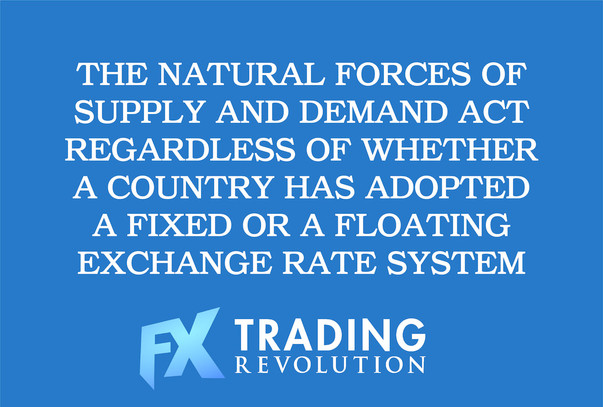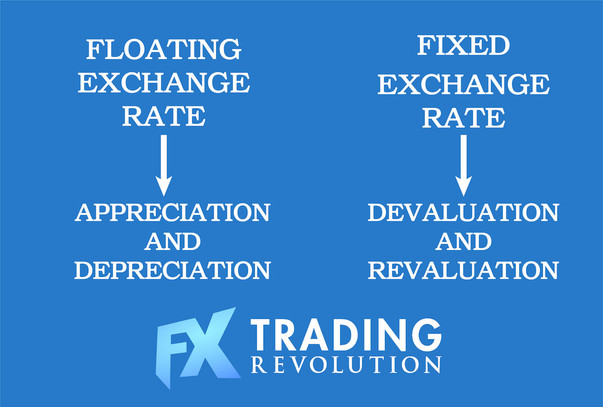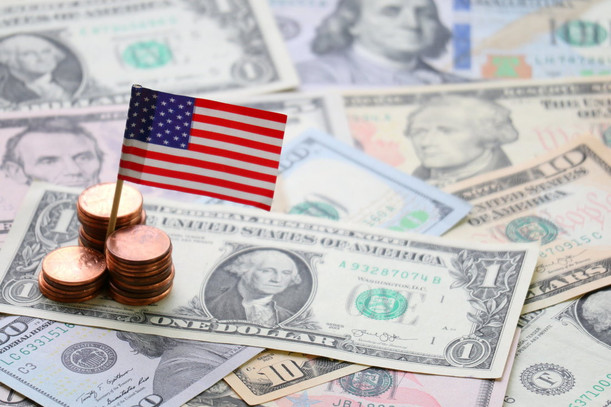Devaluations and Revaluations vs. Appreciation and Depreciation
A notable rise in the value of one currency in a pegged exchange rate system is known as a revaluation of that currency in the Forex market.
Conversely, a significant decline in a currency’s value is known as devaluation.
A pegged exchange rate system is one where the government, or usually the central bank of the country fixes its currency’s value against another.
This is in contrast to a floating exchange rate system as is the standard among most developed countries where the value of a currency is determined by supply and demand forces in the market.
For currencies under a floating exchange rate system, the terms appreciation and depreciation are used to differentiate between the revaluation and devaluation that occur under fixed exchange rates.
Indeed there is a difference. In a floating exchange rate where the market dynamics determine the value of a currency, price fluctuations are generally gradual and occur over a longer period of time.
In a fixed exchange rate system, any changes to the exchange rate can be announced completely unexpectedly and as a result, often cause sharp moves across financial markets and can even onset a broader economic crisis.
Some examples of countries with a fixed exchange rate system are the Chinese Renminbi peg to the US Dollar, the Danish Krone peg to the Euro and the 2011 – 2015 Swiss Franc floor of 1.20 against the Euro.
While these shifts for devaluation and revaluation can come suddenly to reflect a major change in a country’s official exchange rate policy or prospects, they can also occur gradually over time as the country’s policy makers choose to take a gradual path of adjusting the fixed exchange rate.
Supply and Demand Effects on Currency Valuation Shifts
Under the present de facto floating exchange rate system, the rise and fall of the value of one currency relative to another tends to depend on certain fundamental factors.
These key market moving elements apply to the currency of one country compared to that of another and include components such as:
• Supply and demand effects,
• Interest rates and inflation rates, and
• Prevailing economic and political conditions.

For example, if economic or political conditions in the country are also unstable or negative, this could well increase the perceived risk of holding that currency, thereby encouraging Forex traders to sell the currency and cause it to depreciate further.
In this sense, the value of a paper currency acts like the stock price of a country.
The natural forces of supply and demand in the market act regardless of whether a country has adopted a fixed or a floating exchange rate system.
There have been many instances in history where the government or the central bank could not maintain the fixed exchange rate of their currency due to investors’ excessive selling or buying of that currency.
Most often, this has resulted in an abrupt end of the currency peg and a sharp devaluation or revaluation of the currency.
The Effect of the Carry Costs
Another major factor in the relative valuation of currencies has to do with the cost of borrowing one currency and the benefit from lending the other currency. This is commonly known as the cost of carry.
This carry cost depends on the interest rate differential between the two currencies. With all else being equal, investors will tend to favor higher interest rate currencies which in turn causes the high-interest rate currencies to appreciate relative to lower interest rate currencies.
Basically, the higher interest rates attract investors and result in increased demand for the currency. If the supply of the currency is limited, this greater investment interest makes the currency rise in value against other currencies that display less attractive investment prospects.
Nevertheless, a floating exchange rate system doesn’t mean that authorities leave it up completely to the markets to determine exchange rates.
In fact, even floating currency markets are subject to manipulation by central banks and governments that will at times intervene in the currency market.
They usually do so in order to stabilize their currency in sharply moving markets or sometimes to adjust its value according to their exchange rate policies.

Some of the weapons central banks use to affect exchange rates include introducing and abandoning fixed exchange rates, outright buying or selling of the currency in order to counter market forces, and jawboning or talking down their currency.
The Impact of Inflation
The rate of inflation, or the rise in the local prices of goods and services, can also have a significant impact on currency valuations. Very high inflation rates in a country often lead to a devaluation of its currency.
High inflation rates and hyperinflationary trends arise most often because the country prints paper money for internal purposes and thereby allows its money supply to grow massively.
A controlled rise in inflation, on the other hand, is positive for the economy and for the country.
Inflation that rises steadily at a gradual pace often positively affects the currency and causes it to appreciate because the central bank raises interest rates to control the rising inflationary trend and in turn makes the currency more attractive to investors due to the higher interest rates.
Italy’s Approach to Inflation
Some countries have tried to adjust for inflation in their economies by allowing the value of their currency to depreciate. One interesting example involves the Italian Lira before it became integrated into the Euro.
Before becoming part of the European Monetary Union, Italian policymakers would allow rising inflation in their economy to decrease the value of their currency, without intervening to support its value artificially.
This practice eventually made prices expressed in Italian Lira seem very high, although they remained more or less consistent with the currency’s purchasing power parity relative to the currencies of other major economies.
For example, the Italian lira was valued at roughly 2,200 Lira to one U.S. Dollar prior to being consolidated into the Euro. A nice pair of leather boots bought in Italy at the time might have cost the seemingly astronomical price of 220,000 Lira.
Nevertheless, this would have been pretty much in line with the prevailing pricing of $100 for a similar pair of boots purchased in the United States.





